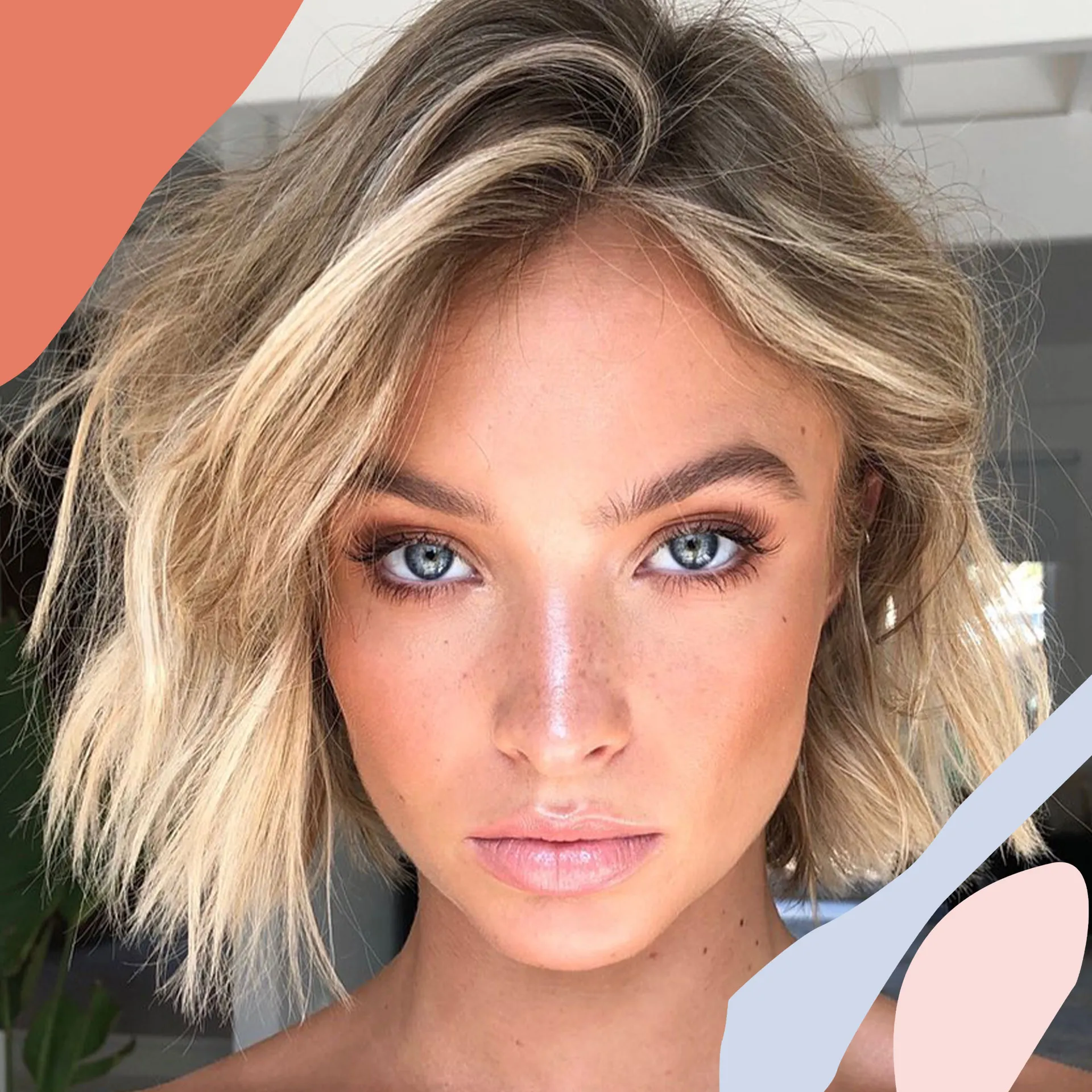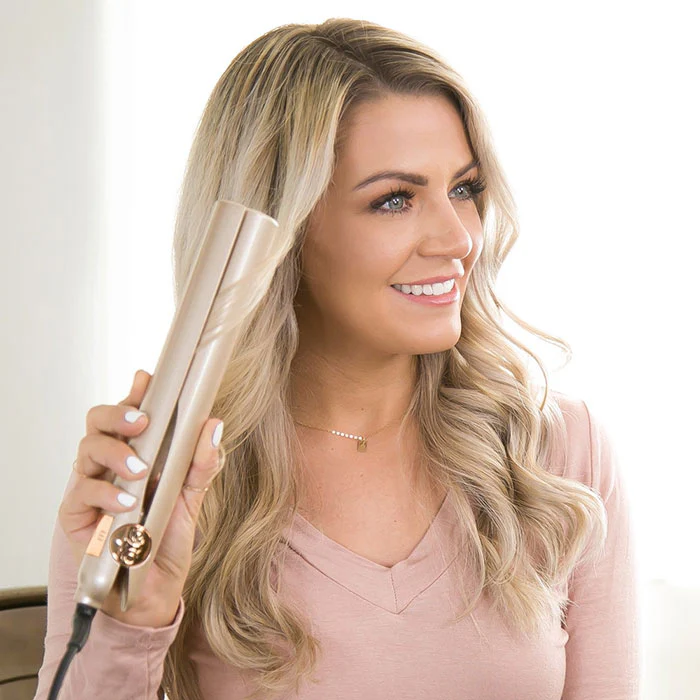
Riding the Wave: Mastering the Timeless Waves Hairstyle
The Allure of Waves: A Timeless Trend
Waves hairstyle captivate with their effortless elegance. This versatile look suits various hair lengths and textures. Waves evoke images of old Hollywood glamour and beachy chic. The style adapts to both casual and formal occasions. Waves frame the face softly, enhancing natural features. They add volume and movement to otherwise flat hair. The waves hairstyle has evolved over decades of fashion. It remains a go-to choice for celebrities and everyday individuals alike.
Waves hairstyle offer a balance between polished and relaxed looks. They work well for different face shapes and hair types. The style allows for personalization and variation. Loose waves create a bohemian vibe, while tighter waves appear more structured. Waves hairstyle complement various outfits and personal styles. They transition seamlessly from day to night looks. The hairstyle requires minimal maintenance once set. This makes waves ideal for busy lifestyles.
Waves hairstyle add texture and interest to monochromatic hair colors. They also enhance dimensional coloring techniques. The style flatters all age groups, from teens to mature adults. Waves create an illusion of thicker, fuller hair. This benefits those with fine or thinning hair. The versatility of waves contributes to their enduring popularity.
They can be achieved through various styling methods. Heat styling, braiding, and pin curling all create wave patterns. Product innovations continue to make waves more accessible. New tools and techniques emerge regularly in the beauty industry. Waves remain a staple in fashion editorials and runways. They represent a timeless aesthetic that never goes out of style.
Types of Waves: From Beachy to Glamorous
Waves come in various styles, each with unique characteristics. Beach waves reign supreme in casual, effortless styling. They mimic the tousled look of hair after a day at the shore. Soft waves offer a more polished version of the beachy look. They feature looser, more defined curves. Glamour waves channel classic Hollywood style. These waves are sleeker and more uniform in appearance. Finger waves harken back to the 1920s flapper era. They create a sculptural, close-to-the-head wave pattern. Body waves add volume and movement to straight hair.
They create a natural-looking, subtle wave throughout the hair. S-waves form a distinctive S-shaped pattern. This style offers a modern twist on classic waves. Mermaid waves feature long, loosely crimped sections. They create a whimsical, fantasy-inspired look. Vintage waves combine elements of different eras. They often incorporate victory rolls or pin curls. Natural waves enhance the hair’s inherent texture. This style works well for those with wavy or curly hair.
Crimped waves create a more textured, edgy appearance. They suit those seeking a bold, statement-making look. Messy waves embrace an undone, effortless aesthetic. They work well for casual, everyday styling. Defined waves feature clear, uniform wave patterns. This style suits formal events and polished looks. Loose waves offer a relaxed, romantic appearance. They complement bohemian and ethereal styles. Tight waves create a more structured, controlled look. They suit those seeking a defined wave pattern. Each wave style offers unique benefits and styling options. The choice depends on personal preference and occasion.
Achieving Waves: Techniques and Tools
Creating waves requires specific techniques and tools. Heat styling remains a popular method for achieving waves. Curling irons and wands come in various barrel sizes. Larger barrels create looser waves, while smaller ones produce tighter curls. Flat irons can also create waves with the right technique. This method involves twisting the hair as it passes through the iron. Hot rollers offer a classic approach to creating waves. They work well for achieving vintage-inspired styles. Heatless methods provide alternatives for hair health concerns.
Overnight braiding creates natural-looking waves by morning. Pin curling involves wrapping sections of hair and securing them flat against the head. This technique works well for creating defined wave patterns. Flexi-rods and foam rollers offer another heatless option. They create uniform waves throughout the hair. The plopping method suits those with naturally wavy or curly hair. It enhances existing texture without adding heat.
Silk or satin scarves can create waves when used as overnight hair wraps. This method also reduces frizz and protects hair while sleeping. Beach sprays add texture and enhance natural wave patterns. They often contain salt to mimic the effects of ocean water. Mousse provides hold and definition for heat-styled or air-dried waves. It works well for those with fine hair seeking volume. Gel can create sleek, defined waves when applied to damp hair.
This method works particularly well for short hairstyles. Diffusers attach to hair dryers to enhance natural curl patterns. They distribute air evenly, reducing frizz and promoting wave formation. Wave-enhancing shampoos and conditioners prep hair for styling. They often contain ingredients that promote natural texture. Leave-in conditioners and oils help moisturize and define waves. These products combat frizz and add shine to the finished style.
Styling Tips for Perfect Waves
Achieving flawless waves requires attention to detail and technique. Start with clean, slightly damp hair for best results. Apply a heat protectant before using any hot tools. This step prevents damage and promotes shine. Section the hair for more controlled styling. Work in layers, starting from the bottom and moving upward. Alternate the direction of waves for a more natural look. Curl some sections away from the face, others toward it. Avoid touching the hair while it cools after heat styling.
This allows the wave pattern to set properly. Use clips to pin curls in place as they cool. This step enhances the longevity of the wave pattern. Brush out tight curls with fingers or a wide-tooth comb. This creates softer, more natural-looking waves. Apply hairspray in light layers to maintain the style. Excessive product can weigh down waves and cause stiffness. Flip the head upside down and shake out the roots.
This adds volume and breaks up any overly perfect patterns. Use dry shampoo at the roots to add texture and absorb oil. This step prolongs the life of the hairstyle. Sleep on a silk or satin pillowcase to maintain waves overnight. These fabrics reduce friction and preserve the wave pattern. Refresh waves in the morning with a spritz of water. Scrunch the hair to reactivate products and reshape waves. For beachy waves, apply sea salt spray to damp hair. Scrunch and allow to air dry for an effortless, tousled look. Create more defined waves by twisting sections while blow-drying.

Maintaining Waves: Care and Preservation
Preserving beautiful waves requires proper care and maintenance. Use sulfate-free shampoos to prevent stripping natural oils. These gentler formulas help maintain wave patterns between washes. Condition hair regularly to keep it moisturized and manageable. Focus conditioner on the mid-lengths and ends to avoid weighing down roots. Deep condition once a week to nourish and strengthen hair. This step prevents damage from frequent styling. Avoid washing hair daily to maintain natural oils. Use dry shampoo between washes to refresh the scalp.
Allow hair to air dry when possible to reduce heat damage. This method also helps maintain natural wave patterns. Use a microfiber towel or old t-shirt to dry hair. These materials reduce frizz compared to traditional bath towels. Apply leave-in conditioner to damp hair before styling. This step adds moisture and enhances wave definition. Use alcohol-free styling products to prevent drying out hair. Look for products specifically formulated for wavy hair types. Protect waves while sleeping by using a silk or satin bonnet. Alternatively, try the pineapple method to preserve curls and waves.
Refresh waves in the morning with a water and leave-in conditioner mixture. Scrunch this solution into hair to reactivate products and reshape waves. Trim hair regularly to remove split ends and maintain shape. Healthy hair holds wave patterns better than damaged strands. Avoid touching hair throughout the day to prevent frizz. This habit also helps maintain the wave pattern for longer. Use a wide-tooth comb or fingers to detangle wavy hair.
Waves for Different Hair Types and Lengths
Waves hairstyle adapt to various hair types and lengths with proper techniques. Fine hair benefits from volumizing mousses before wave styling. These products add body and help waves last longer. Thick hair may require stronger hold products for defined waves. Gels and creams help control volume in thicker hair types. Curly hair can achieve looser waves through stretch styling. This involves elongating curls to create a wavy pattern. Straight hair often needs more effort to hold wave patterns.
Heat styling and setting products play crucial roles for this hair type. Short hair can achieve waves through pin curling or flat iron techniques. These methods create texture and movement in cropped styles. Medium-length hair offers versatility in wave styling options. This length suits various wave patterns, from beachy to glamorous. Long hair creates dramatic, mermaid-like waves when styled. The weight of long hair can affect wave longevity, requiring stronger hold products. Layered hair creates natural-looking waves with minimal effort.
Layers enhance movement and reduce weight in wavy styles. Color-treated hair requires extra care when creating waves. Use color-safe products and gentle styling methods to preserve hue. Coarse hair benefits from moisturizing products when styling waves. These formulas help smooth the cuticle for shinier, more defined waves. Thin hair can appear fuller with strategically placed waves. Focus on creating volume at the crown for a thicker appearance.
Oily hair types should concentrate wave-creating products mid-length to ends. This prevents weighing down roots or exacerbating oil production. Dry hair needs extra moisture when styling waves. Use hydrating masks and oils to prevent brittleness and frizz. Wavy hair can enhance natural patterns with the right products. Creams and gels define existing waves without adding crunch.

Waves in Popular Culture and Fashion
Waves hairstyle permeate popular culture and fashion trends. Hollywood icons like Veronica Lake popularized glamorous waves. This style became synonymous with 1940s silver screen elegance. The Beach Boys brought beach waves into mainstream consciousness. Their surfer image cemented the association between waves and laid-back cool. 1970s disco era saw the rise of voluminous, free-flowing waves. Icons like Farrah Fawcett epitomized this bouncy, carefree style. The 1980s embraced big, permed waves for both men and women.
This dramatic look defined the decade’s bold approach to hair. Grunge culture of the 1990s favored messier, more natural waves. This style reflected the era’s rejection of polished perfection. The early 2000s saw a return to sleeker, more defined waves. Pop stars and actresses popularized this glossy, glamorous look. Boho-chic trends of the mid-2000s embraced tousled, beachy waves. This style aligned with the free-spirited aesthetic of the time. Social media influencers drove the popularity of mermaid waves.
Platforms like Instagram showcased these long, flowing styles. Red carpet events consistently feature waves on Hollywood stars. These styles range from old Hollywood glamour to modern, edgy looks. Fashion runways often showcase avant-garde interpretations of waves. Designers use waves to complement and enhance their clothing collections. Music videos frequently feature artists sporting various wave styles. These looks influence fan fashion and popular trends.
Television shows set trends with character waves hairstyle. Shows like “Game of Thrones” popularized intricate, fantasy-inspired waves. Bridal fashion embraces waves for romantic, timeless looks. Many brides opt for soft waves to enhance their wedding day style. Waves appear in art and photography, symbolizing beauty and freedom. The fluidity of waves lends itself well to artistic expression. Waves continue to evolve with each passing fashion season. They remain a versatile, beloved hairstyle in popular culture.



